Key Points (TL;DR)
Flare embeds oracles into its core protocol, ensuring the reliability and integrity of data.
Flare builds a data-driven blockchain ecosystem using three core protocols: FTSO for decentralized price feeds, data connectors connecting Web2 and Web3, and FAssets for leveraging non-smart contract assets.
Flare started as a data infrastructure. With the launch of FAssets, it aims to become a liquidity hub that will connect the ecosystem, including assets such as Bitcoin, Ripple, and Dogecoin.
Weaknesses of blockchain technology
Blockchain technology follows the principle of "code is law" and creates a trustless system that provides security and trust by automatically executing processes through code, eliminating the need for third-party intermediaries. However, the security of this system is entirely dependent on the integrity of the input data. If there is a problem with the input data, even a perfectly designed smart contract may go wrong, causing the operation of the entire system to become unpredictable, thereby causing potential risks.
To address this challenge, the blockchain industry has introduced oracles, which are distributed data providers. However, oracles usually operate outside the blockchain, limiting their ability to maintain the security and integrity of the blockchain. In addition, the use of external data sources also introduces the risk of single point failure, and some oracles lack decentralization due to their reliance on a small number of nodes. Therefore, the reliability of data becomes a weakness of blockchain technology.
All for data
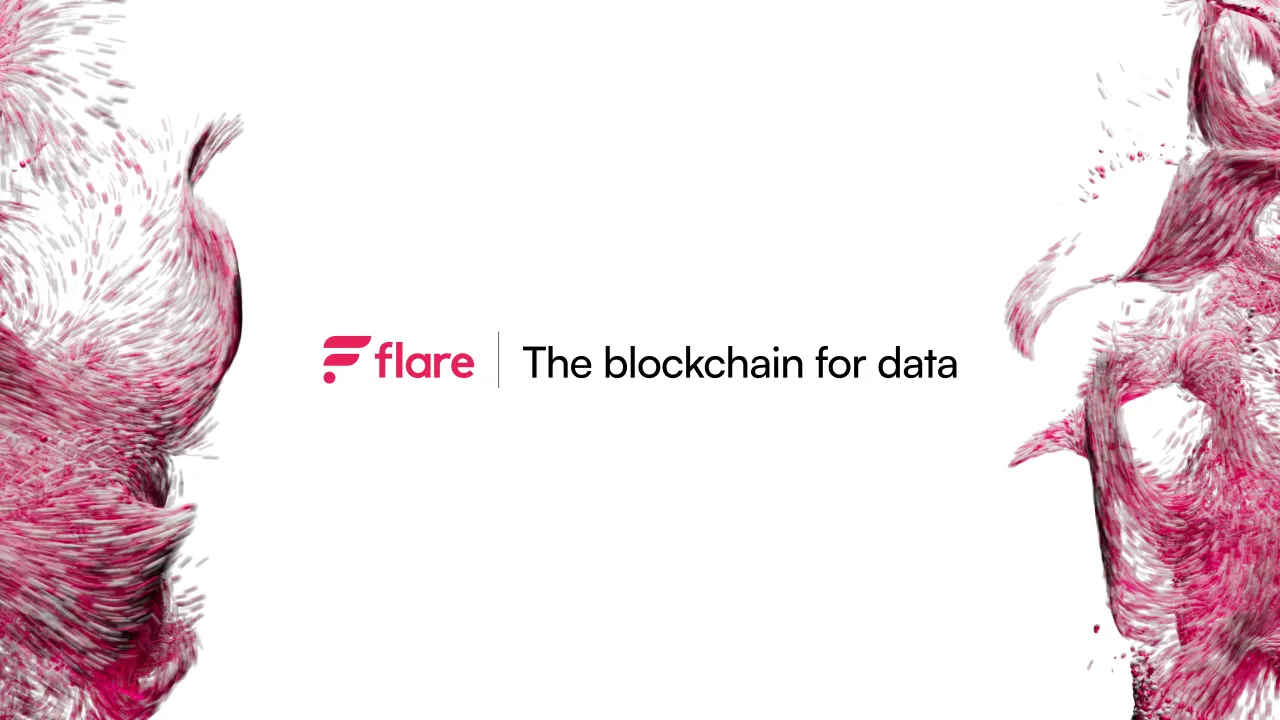
Source: Flare
Flare is a blockchain infrastructure dedicated to "data" that aims to solve the problem of relying on external oracles. Although existing blockchains usually rely on external oracles to access data to ensure security, such a setup cannot guarantee the reliability of the data obtained.
Flare ensures that oracles enjoy the security of the blockchain by embedding them into its core protocol. A successful hack of an oracle requires compromising the entire blockchain network, a structure that ensures data reliability and security. Flare's approach is to integrate blockchain and oracles into one system, eliminating the security risks posed by external oracles. Developers can use embedded oracles to seamlessly build data-rich Web3 services without relying on external solutions.
Flare offers three core protocols built on its embedded oracles. 1 ) FTSO (Flare Time Series Oracle) provides decentralized price information. 2) Flare Data Connector (FDC) integrates external chain and Web2 data into Flare. It verifies and protects the data within the blockchain. 3 ) FAssets makes non-smart contract assets such as Bitcoin, Ripple and Dogecoin available for DeFi, expanding their functionality in the blockchain ecosystem.
2.1. FTSO: Providing decentralized price information
Flare's FTSO provides time series price data in a decentralized manner. This data includes asset prices updated at specific intervals and is critical to many Web3 services, especially DeFi. However, most services still rely on centralized data providers. Manipulation or errors in this data could compromise the reliability and stability of the entire system.
The implementation of FTSO is particularly important because the limitations of centralized data providers have been demonstrated in historical cases. In March 2023, Berkshire Hathaway's stock price plummeted by about 99% due to a computer error, illustrating the risk of single-point failure in centralized data systems. If such errors occur in the automated environment of Web3, it may result in serious investment losses. Therefore, the decentralized and reliable data solutions provided by Flare are particularly important to help enhance the stability and reliability of the system in the blockchain ecosystem.
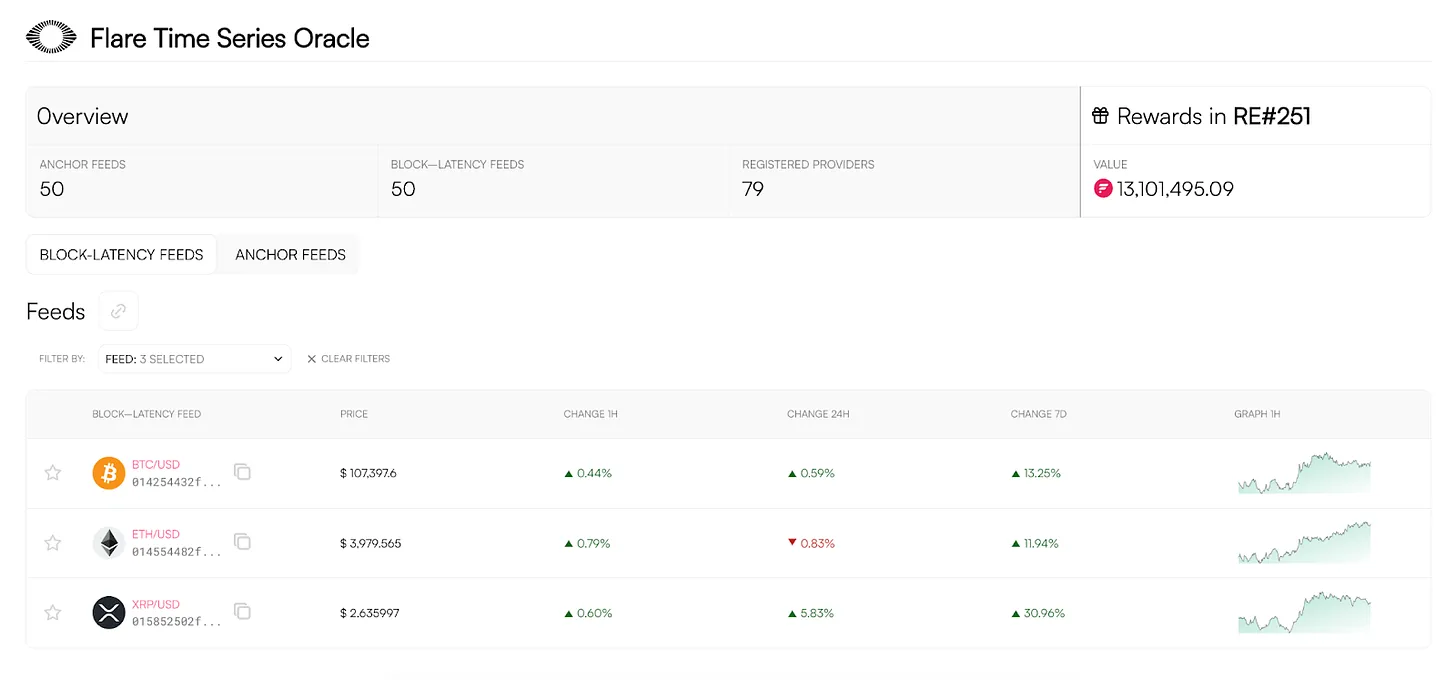
FTSO, source: Flare Systems Explorers
To address this, Flare uses a decentralized price feed system through FTSO, which has more than 100 independent validators . Validators collect time series price data from various sources and submit it to the blockchain. The consensus mechanism determines the most accurate value from the submitted data. Validators who provide inaccurate or manipulated data will be marked as outliers and excluded. They will not receive rewards and may face financial penalties. This system ensures the reliability and integrity of the data on Flare.
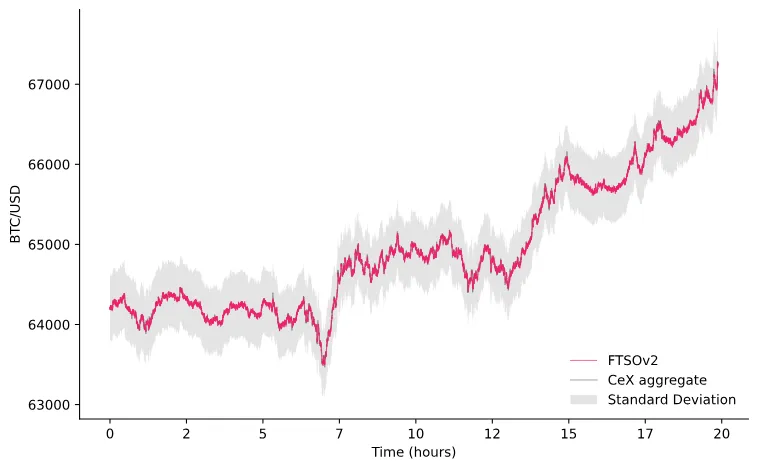
Source: Flare
The key differentiator of FTSO is that all 100+ validators participate in every price feed. Many oracles suffer from inconsistent validator participation, where some feeds are fully validated while others rely on only a few validators. Flare ensures consistent validator participation across all feeds. This minimizes data discrepancies between feeds and improves the reliability of the entire system. FTSO data is closely correlated with prices on major exchanges and stays within standard deviation, objectively demonstrating its accuracy and reliability.
In May 2024, Flare released FTSO v2 , which increased the speed and scope of data processing. Previously, price information was limited to cryptocurrency prices, but now it can support a wide range of Web2 data, such as stock and commodity prices. The update cycle was shortened from 180 seconds to 90 seconds. The number of price information increased from 18 to more than 50, and the infrastructure can be expanded to 1,000 information.
2.2. Flare Data Connector (FDC): Connecting All Data
Blockchains are inherently isolated from the outside world, which creates challenges when integrating real-world data . Flare Data Connectors connect external chains and off-chain data to the Flare ecosystem, enhancing scalability and usability.
For example, Web3-based insurance services require reliable real-world data, such as weather and flight delays. Without this data, these services may face severe limitations or become unviable. Prediction markets like Polymarket also rely on reliable data, such as sports scores. If they cannot securely access this data, their usability decreases and their risks increase. Interoperability with other chains is critical to the blockchain ecosystem. Without connections to other networks, the blockchain remains isolated. This isolation limits the growth and development of the entire ecosystem.
The Flare Data Connector addresses these challenges. Flare’s “Paris 2024 Olympics Prediction Market Game” demo showcases its capabilities. The service reliably fetches Olympic event results and rewards users who successfully predict the event’s outcome.
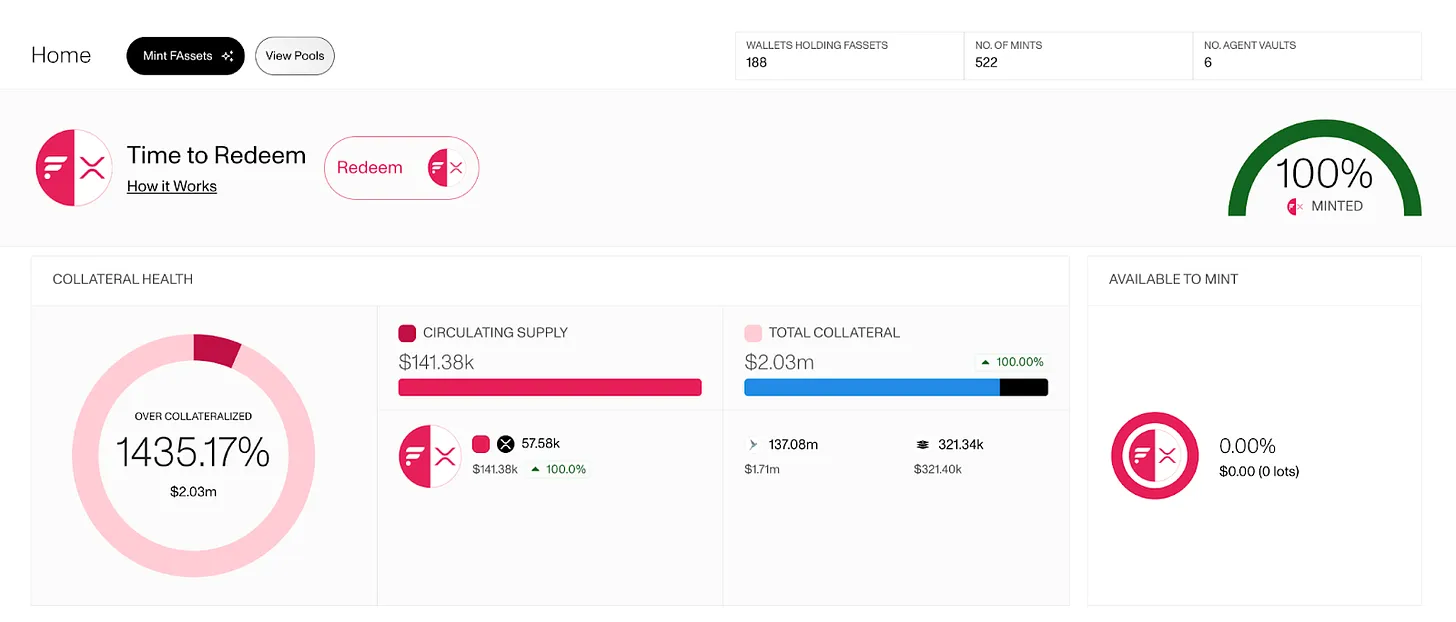
Flare Olympics prediction market game demo, source: Flare
Flare's data connector uses a multi-party verification mechanism to ensure the authenticity and accuracy of external data (such as Olympic results). By collecting data from multiple sources, including official APIs, through independent verifiers and using consensus mechanisms for data verification, Flare's technology solves the reliability issues faced by many existing services, especially those that rely on centralized providers or manual data entry. This design effectively reduces the risk of manipulation and errors, ensuring that services can access high-quality data.
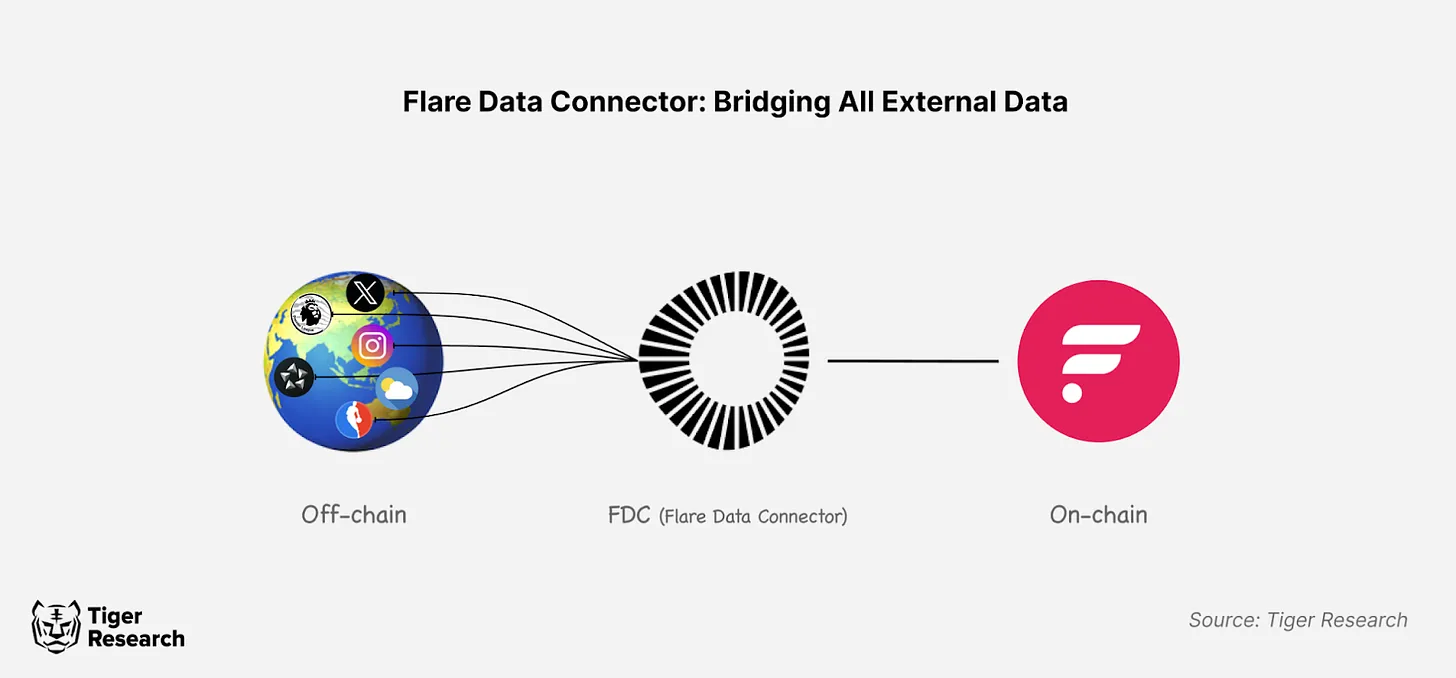
Data connectors have a very broad application prospect, and can integrate various deterministic data into the blockchain through APIs. In addition to sports results, data connectors can also introduce data from various sources, such as item transaction records in online games, number of likes on social media, etc. By providing support for data exchange between different blockchains, data connectors achieve interoperability between blockchains, allowing assets on multiple chains to interact and verify seamlessly. This functionality has driven the emergence of new use cases, such as NFTs issued on the Flare network can be traded in Dogecoin or Ripple, further broadening the scope of application of the ecosystem.
2.3. FAssets: Building a multi-ecosystem liquidity center
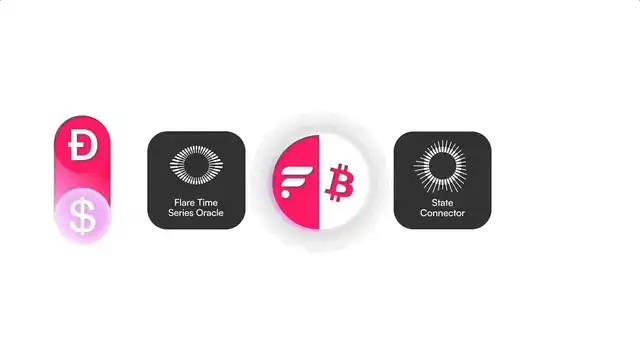
Source: Flare
FAssets is a protocol developed by Flare that allows non-smart contract assets (such as Bitcoin and Ripple) to be used in the DeFi ecosystem. Based on Flare's core technology FTSO and data connector, this implementation breaks the limitations of the first generation of blockchains, allowing assets without smart contract functions to participate in complex DeFi operations.
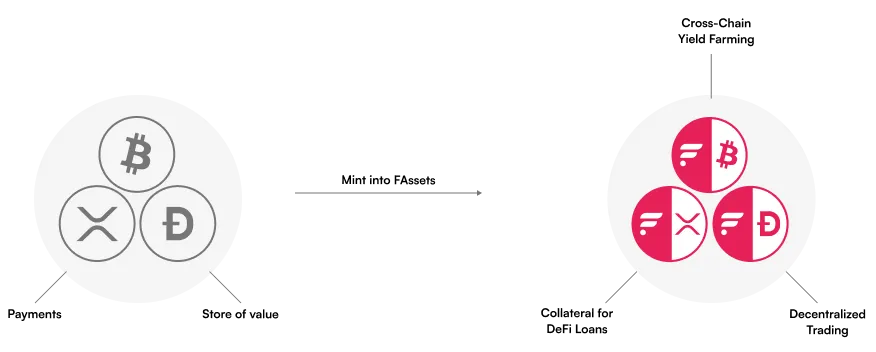
FAssets processing flow, source: Flare
If a user wants to convert Bitcoin into FAsset (such as $FBTC), they first need to send Bitcoin to a specified address. The data connector verifies whether the transaction actually occurred on the Bitcoin blockchain. Once the verification is complete, the ERC-20-based FAsset will be minted on the Flare network, and users can then use the token within Flare's DeFi ecosystem or bridge it to other blockchains. This process not only provides users with greater flexibility and convenience, but also greatly enhances the market competitiveness of other non-smart contract assets.
Since FAssets involve asset connections and transfers between multiple chains, ensuring their reliability is crucial. Flare has adopted a variety of technical means to ensure the reliability and security of this process:
1. FTSO real-time price feedback: real-time monitoring and reflection of market price fluctuations to ensure the effectiveness of assets in DeFi operations.
2. Consensus mechanism: Maintain the integrity of the system and ensure that all relevant transactions and operations are fully verified.
3. Overcollateralization model: The value of the collateralized assets held exceeds the issued assets, solving the trust problem in the traditional centralized model and thus reducing risks.

The native stablecoin USDX introduced by Flare plays a key role in the stability and liquidity of the FAssets system. Users can obtain cUSDX by staking USDX, which can be used as collateral in DeFi. In addition, users can also obtain stable returns from short-term U.S. Treasury bills (T-Bills), which not only enhances the system's collateral base, but also provides stability during market fluctuations, further improving the utilization of assets.
3. How Flare will promote the development of Web3 industry
3.1. Expanding the utility of non-smart contract assets
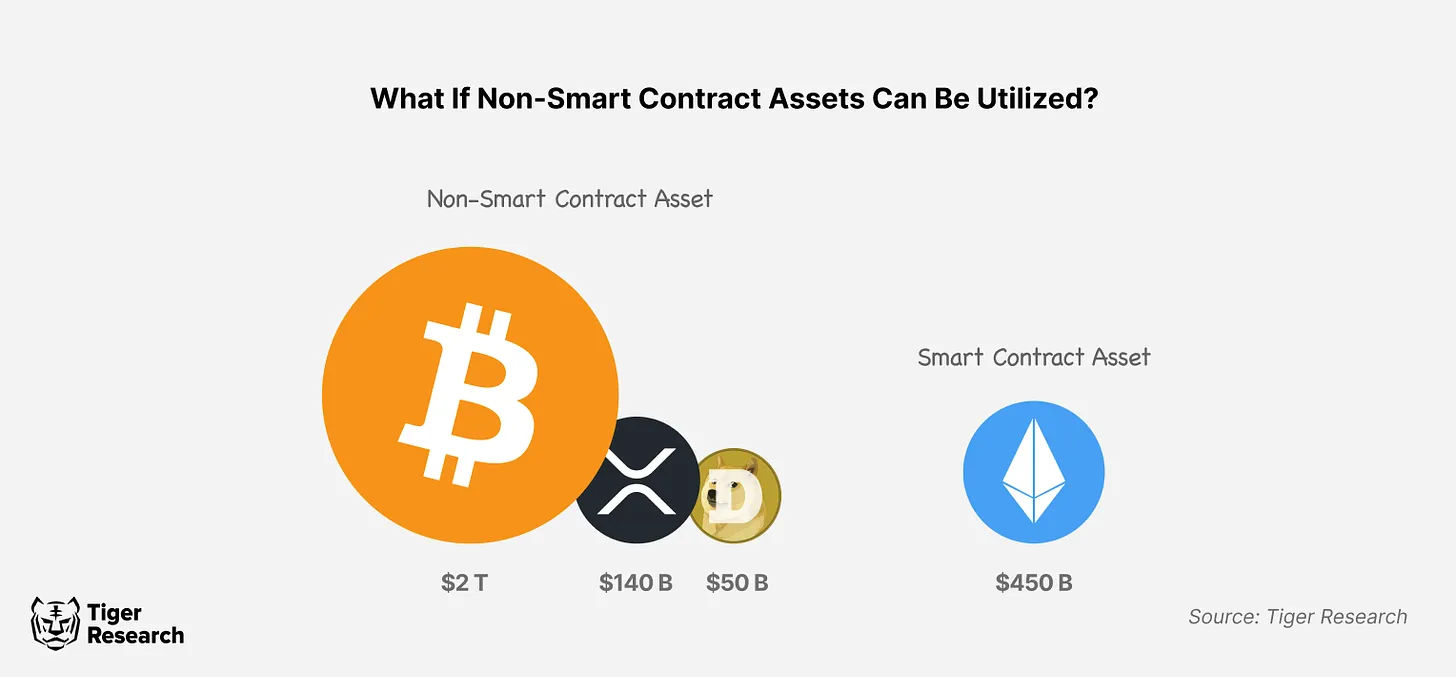
Non-smart contract assets are an important part of the Web3 industry. Bitcoin, Ripple, and Dogecoin together account for more than 70% of the cryptocurrency market cap. Flare positions itself as a liquidity hub. It connects these large markets to the Web3 ecosystem.
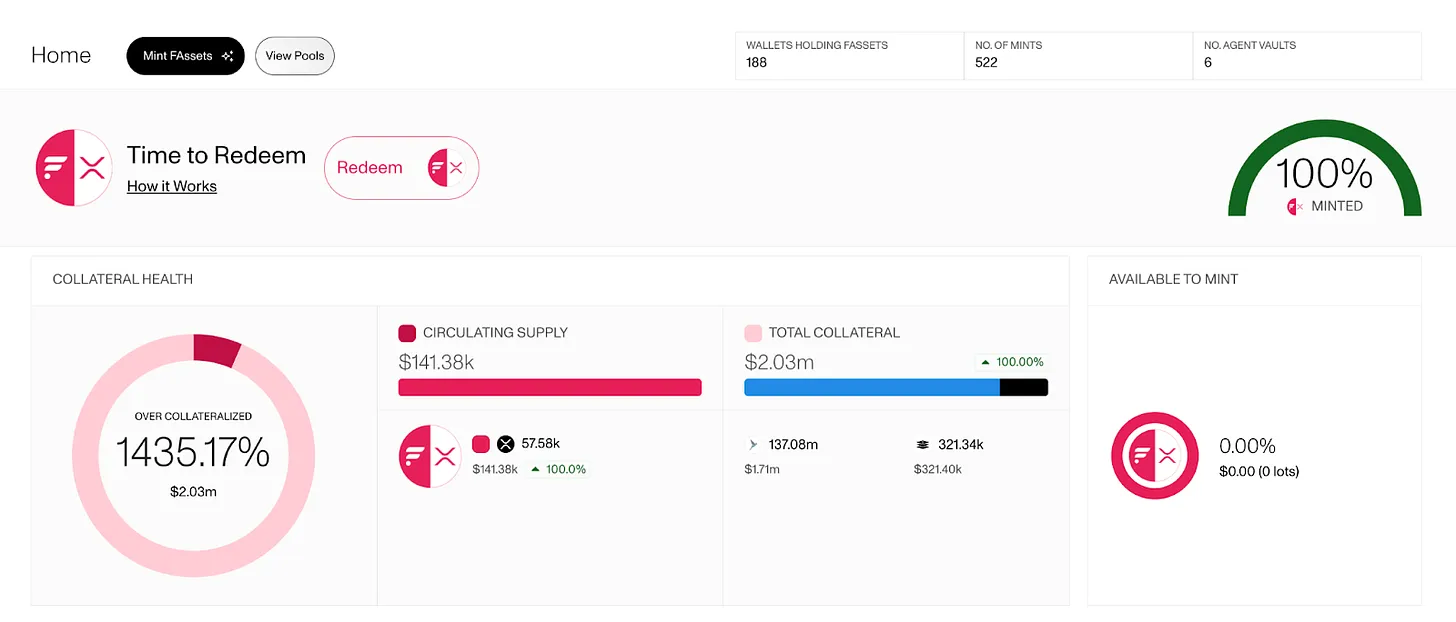
FAsset Songbird, source: Flare
At the heart of this vision are FAssets. On December 18, 2024, FAssets were launched on Flare’s canary network Songbird. Notably, within just one hour of the launch, Ripple-based FAsset $FXRP was minted, valued at approximately $2 million. This highlights the strong market demand and high expectations for leveraging non-smart contract assets.
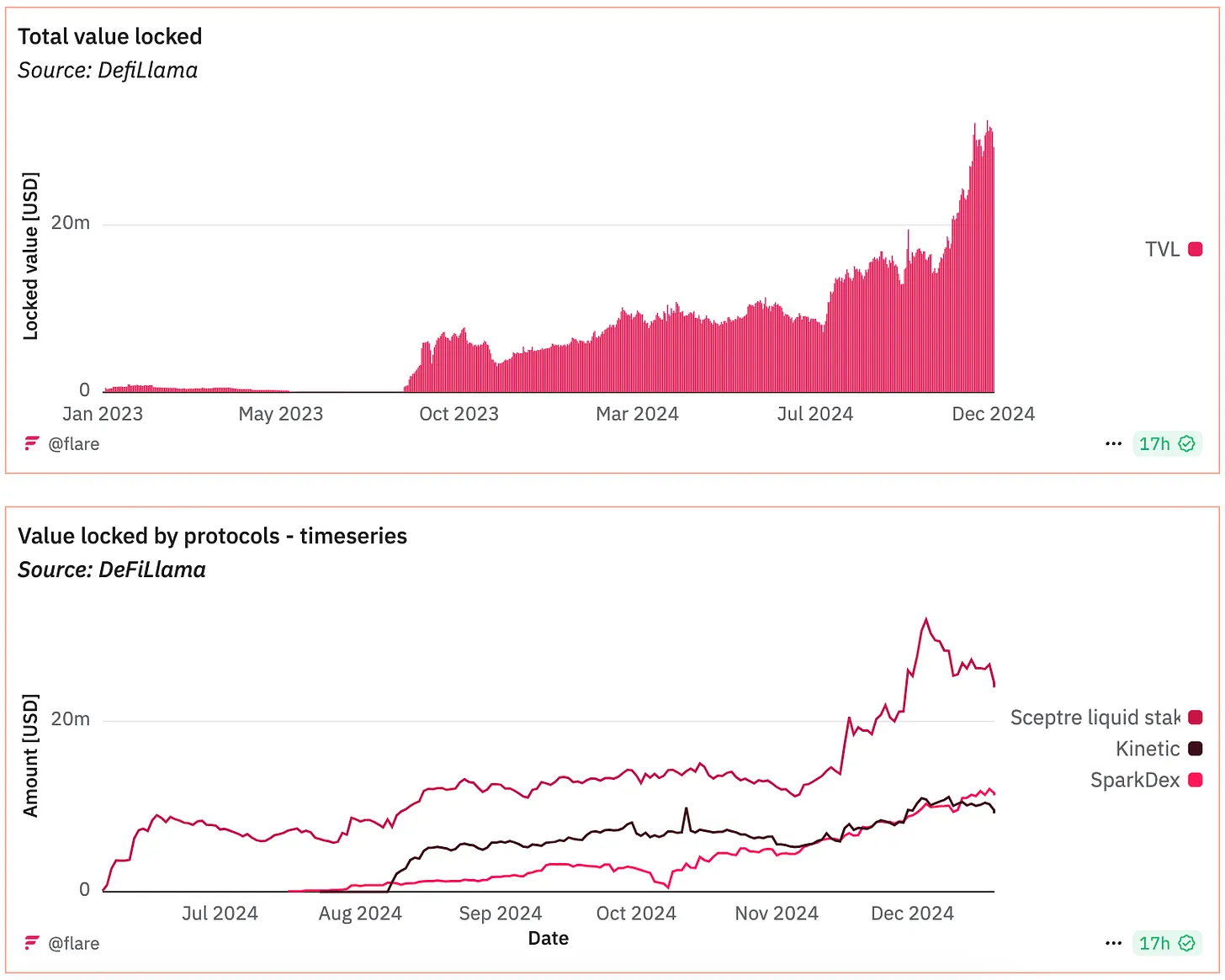
Source: Dune
Notably, Flare is expanding its ecosystem through various DeFi services. Its total locked value (TVL) is currently $50 million. Active services include lending platform Kinetic, decentralized exchange SparkDEX, and liquidity staking solution Sceptre. The introduction of FAssets is expected to create synergies with these services and non-smart contract assets. Flare also runs a rewards program to encourage ecosystem participation. The program is expected to enhance its growth momentum in the future.
3.2. Expanding blockchain use cases
Flare aims to expand the application scope of blockchain technology through its data connector, which effectively connects the traditional Web2 and emerging Web3 ecosystems. This connection not only accelerates the development of industrial applications, but also overcomes the challenges of the Web3 ecosystem in trusting Web2 data. Due to security and privacy issues, Web2 companies are often reluctant to share their data, and Flare's embedded data oracle can effectively solve these problems. It supports the secure use of off-chain data on the chain and can verify the authenticity and integrity of the data.

Source: Red Date Technology
In November 2024, Flare’s technology was recognized in a partnership with China’s national identity system, RealDID. Together, the two parties launched a cross-border KYC solution. This marks the first time that Flare’s data infrastructure has been applied to the highly regulated field of identity. These achievements highlight Flare’s potential in industries where data reliability is critical. Its technology is expected to accelerate enterprise adoption of blockchain.
4. Flare innovates industries beyond blockchain
Flare is also considering how to achieve comprehensive industry innovation beyond blockchain data infrastructure. Through technological innovation, Flare has identified two main goals: one is to solve the technical limitations in the Web3 field, and the other is to use blockchain technology to promote the development of artificial intelligence.
4.1. Solving the technical limitations of the Web3 industry
The current Web3 ecosystem faces problems of low data utilization and high computational costs, making it difficult to develop data-intensive consumer applications such as Instagram and X. To this end, Flare is supporting the development of various services by expanding its infrastructure to provide up to 1,000 real-time data sources and ensuring the reliability of data through decentralized verification.
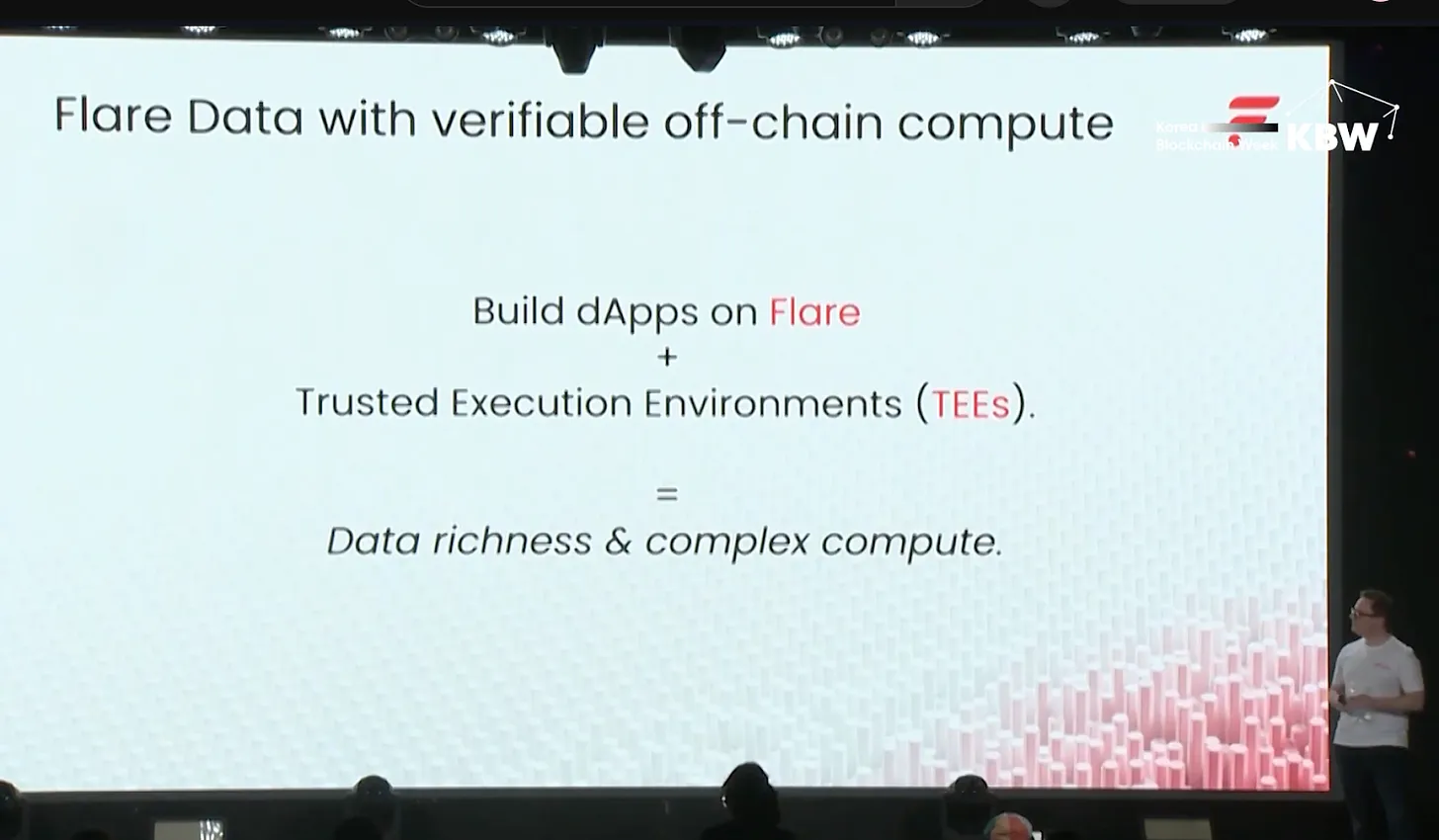
In order to establish a stable and efficient computing environment, Flare is also researching Trusted Execution Environment (TEE) technology. Combining these technical capabilities with its experience in data infrastructure operations, Flare is expected to overcome the current technical limitations of Web3 and provide a foundation for large-scale data processing and complex computing.
4.2. Using blockchain to advance artificial intelligence technology

Flare lays the foundation for the sustainable development of artificial intelligence by demonstrating how blockchain consensus mechanisms promote the advancement of artificial intelligence technology. AI models rely on high-quality data, and the reliable data provided by Flare helps improve the quality of models and reduce the bias caused by bad data. At the same time, Flare's reward and punishment consensus mechanism also encourages responsible data generation and solves the problem of shortage of high-quality data.
5. Conclusion

How high will Bitcoin go? That’s the better question. Source: EO
Flare has a clear vision to solve problems beyond blockchain. "Many projects only focus on funding and finance, but we need to invest more resources to promote technology development," said Hugo Philion, founder of Flare. This reflects Flare's philosophy of valuing the intrinsic value of technology rather than short-term results.
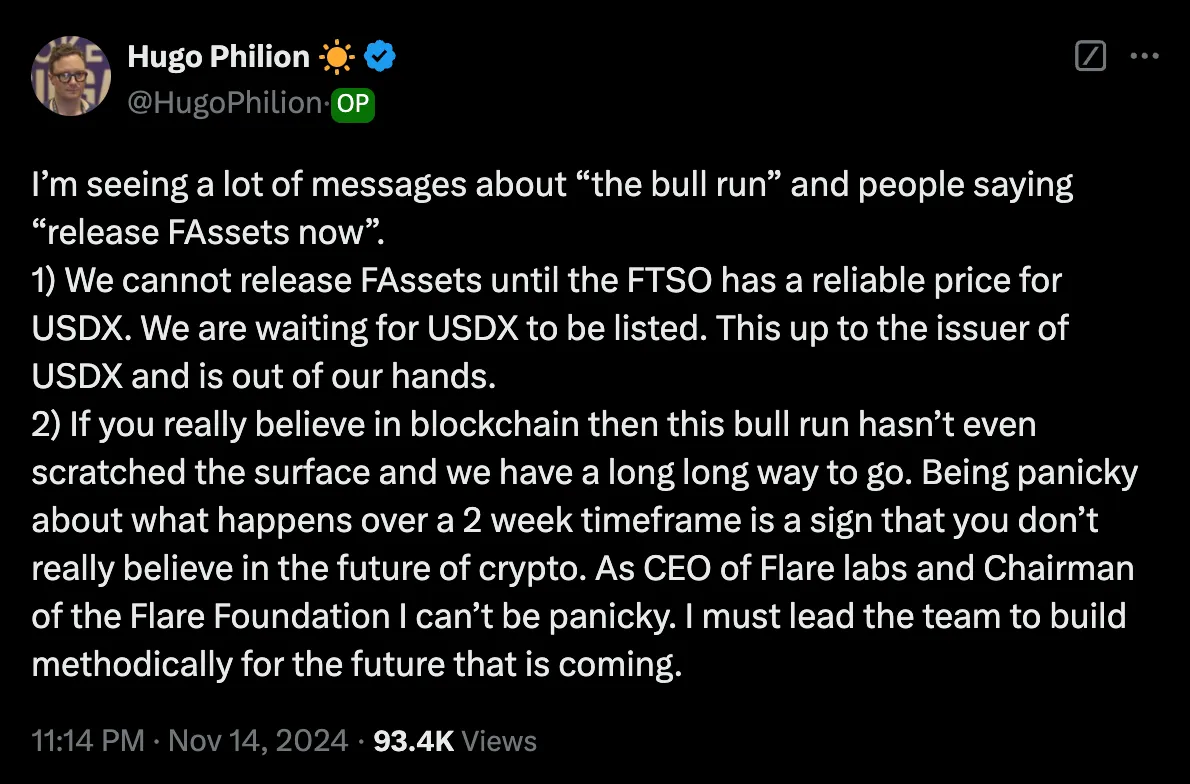
Source: Hugo Philion
Flare's development process reflects this philosophy. Reliability and stability come first. Flare releases major features only after they are fully prepared and verified. Hugo stressed the importance of "methodically building the future, unaffected by market conditions." Flare focuses on long-term trust and stability rather than quick profits.
This approach advances Flare’s goal of creating a trusted data infrastructure that goes beyond blockchain. Flare’s future as a critical data infrastructure provider is worth looking forward to.
Original link: https://reports.tiger-research.com/p/flare-blockchain-for-data-eng














